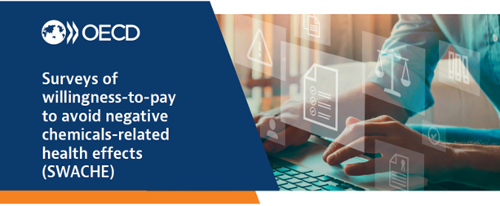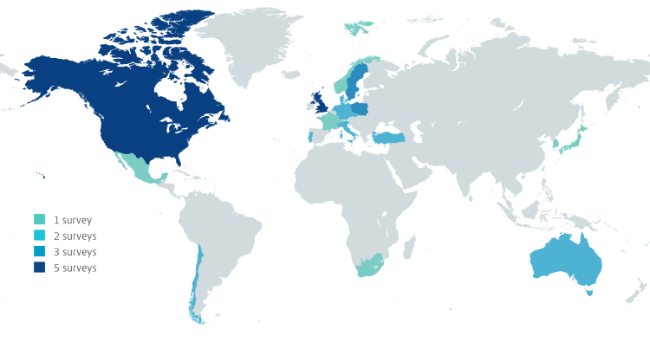Environment
The costs and benefits of regulating chemicals
Chemicals are used in every product and play an important role in the everyday life of people around the world. Such products are used for personal care, house cleaning, equipment and good manufacturing but also to prevent and cure disease. They provide countless other benefits that make life better for people. However, chemicals need to be soundly managed to avoid risks to human health and the environment.
The OECD has worked with governments and industry since the 1970s to improve chemical safety and biosafety and also to harmonise approaches to their assessment and management in order to save resources for both government and industry.
More recently, the OECD has undertaken two projects to support the socio-economic analysis of chemicals by helping to better quantify and monetise their morbidity and environmental impacts, the so-called "Surveys on Willingness-to-Pay to Avoid Negative Chemicals-Related Health Impacts (SWACHE)" and "Socio-economic Analysis of Chemicals by Allowing a better quantification and monetisation of Morbidity and Environmental impacts (SACAME)" projects.
 |
Quick linksBrochure: SWACHE SurveysResults by health effectSACAME projectMortality risk valuationContacts |
Policy gap and objectives of the SWACHE project
While countries around the world are setting up legal frameworks to address these risks, the cost of policy inaction is still poorly understood. Assessment of chemicals management options and environmental policies can be considerably improved by better estimating their costs and benefits. However, data to support such analyses are lacking.
The OECD Surveys on Willingness-to-Pay to Avoid Negative Chemicals-Related Health Impacts (SWACHE) project brings together expertise on chemical safety and economic analysis to fill this gap.
The project aims to establish internationally comparable values for the willingness-to-pay (WTP) to avoid negative health effects due to exposure to chemicals. Such values can be used to demonstrate and measure the economic benefits of minimising the impacts of chemicals on human health.
To derive WTP values, surveys of a large number of citizens of countries have been conducted. These surveys apply state-of-the-art approaches that can be used by economists to determine the full monetary value that survey respondents place on reducing their risk of a particular health effect.
A project of an unprecedented scale
The SWACHE project is organised in two rounds focusing on five health effects each.
The first round of surveys were implemented in 2022 in at least five countries each where representative sample of at least 1 200 respondents were collected. Overall, one to five of the surveys were implemented in 22 countries, totalling 46 surveys conducted. The health effects include:
- Infertility
- Chronic kidney disease
- Very low birth weight
- Asthma
- IQ loss
The second round of health effects will include thyroid dysfunction, miscarriage, hypertension, non fatal cancer and skin sensitisation and will be carried out in 2023.
Survey responses are empirically analysed to estimate mean WTP for a given reduction in health risk. Value of a Statistical Case are derived by dividing mean WTP by the average risk reduction.
Countries in which the first round of SWACHE surveys were implemented

The benefits of reducing chemicals related negative health effects are considerable
The first round of surveys clearly indicate that people are willing to pay a significant amount to reduce their risk of developing various negative health effects. The Value of a Statistical case is estimated in USD Purchasing Power Parity (PPP) from USD 91 000 for infertility to USD 1 194 000 for very low birth weight, on average, across the countries surveyed. The second highest value is found for serious kidney disease (USD 805 000) followed by childhood asthma (USD 430 000) and adult asthma (USD 280 000).
The mean WTP for reducing asthma severity equals USD 529 per year for adults and USD 948 per year for children. People living in OECD countries are also willing to pay USD 3 050 to avoid the loss of 1 IQ point in their children.
These values can be used in benefit-cost analysis of chemicals management options. Typically, benefits of a given policy is measured by multiplying value of a statistical cases and the number of statistical cases prevented every year by the policy. Annual benefits are then summed across health effects and years. The net present value of a policy option is equal to the difference between the sum of discounted benefits and costs.
Overall, the values of a statistical case estimated by the SWACHE project provide significant evidence that chemicals management systems are worth implementing.
The benefits of reducing risk by health effect
Click on one health effect to learn more:
|
|
|
|
|
|
The SACAME project
SACAME stands for the Socio-economic Analysis of Chemicals by Allowing a better quantification and monetisation of Morbidity and Environmental impacts. The SACAME project examined the current available methodology for economic valuation for chemicals, including the challenges involved.
Contacts
For more information, please contact our experts from the OECD Environment Directorate:
Engage with us
- OECD Environment on Twitter and Linkedin
- Email the Environment Directorate
- To receive our latest Environment news, publications and events, sign up to our newsletter.
With the financial assistance of the European Union
 |
The OECD SWACHE project has received the financial assistance of the European Union. The views expressed herein can in no way be taken to reflect the official opinion of the European Union. |
Related Documents